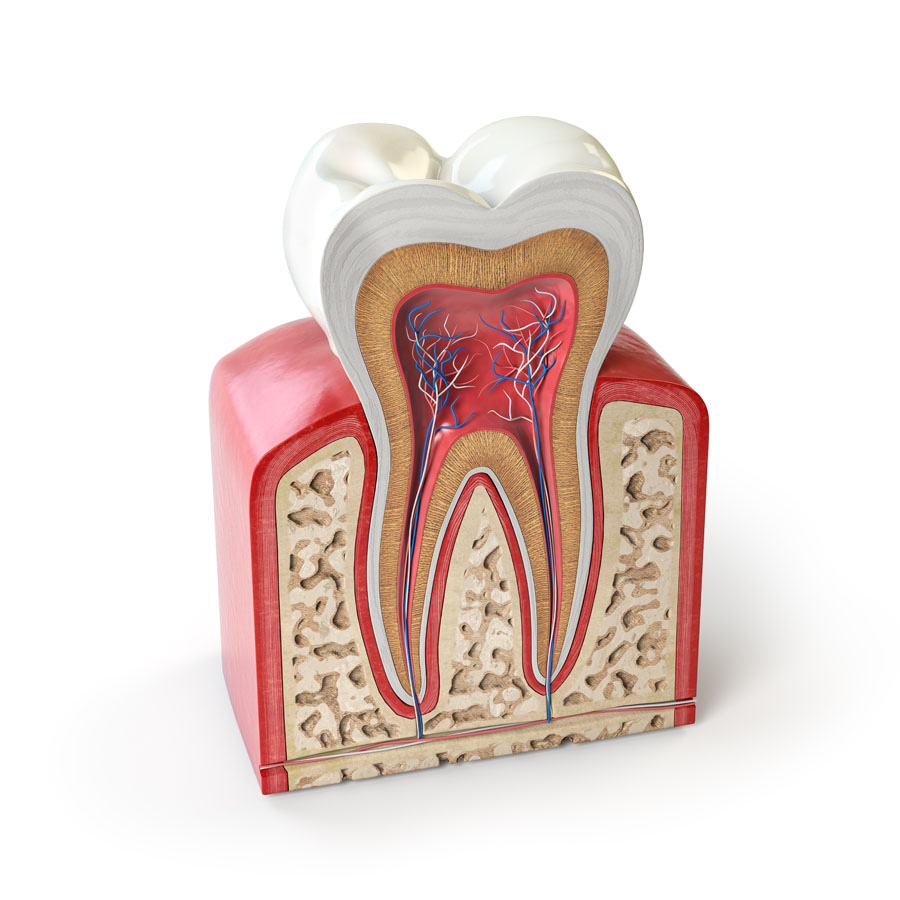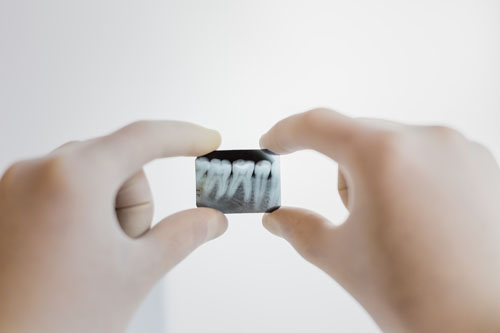Tooth Fillings
One of the best ways to keep your teeth and gums healthy is to ensure that you stay ahead of any issues that could potentially lead to larger concerns like gum disease or the loss of a tooth. Even with a strict home dental care routine, cavities and minor tooth damage can occur. It can be quite a shock to be told you have a cavity that needs to be filled but that should be where the drama ends. Getting a filling at our dental surgery should be calm, relaxed and above all pain-free.
Once there are signs of any minor damage or decay on a tooth, it’s essential that you get this treated by your dentist as soon as you are able. Restorative dentistry treats minor concerns and keeps them from escalating into larger issues that could ultimately lead to serious infection and advanced decay that results in the loss of a tooth.


What is a tooth filling?
A cavity is a small hole on a tooth that is the result of tooth decay. The sugar we eat and drink creates an acidic environment that allows the mineral to escape our tooth leaving a hole behind. If the cavity is not treated by a professional, you will be putting the tooth at risk of further decay and damage as the decay will continue inside the tooth unabated.
The treatment will include removal of the decay and repair the tooth with a special material. For many years the filling material of choice was an amalgam filling (Metal Filling). This material was an effective option, but it was very visible once in place. A metal alloy, this filling material didn’t provide the patient with the desired aesthetics. The contrast in colour between the tooth and the metal filling is so great that it makes the filling stand out.
It was, however, the solution of choice because it offered the durability and strength needed to ensure it could stand up to the pressure of a bite.
Reliable white tooth filling materials (Composite Filling) are now more commonly used and amalgam is scheduled to be phased out in the next few years. Dental composite comes in a wide variety of shades and matches the colour of the natural tooth. This allows patients to benefit from a beautifully natural tooth restoration.
Composite can repair almost all the damage that a tooth may have from fractures to large cavities. However, some of the larger fillings may require a porcelain crown to preserve the tooth from any further structural damage.
Almost as important as the advances in the composite material itself has been the improvement in the bonding or glue that sticks the filling to the tooth. This has given greater reliability to even larger white filling build-ups.
One of the reasons it’s so important to keep up with your routine dental examinations is so that your dentist can identify cavities and other concerns in their early stages. If you can see noticeable damage or signs of decay on a tooth, then it’s time to book an appointment with your dentist.
Are you living with a toothache or other type of sensitivity? Do you have a sharp edge cutting your cheek or tongue? Time to give us a call.
It is important to remember that quite often decay is symptomless and you may be completely unaware you have a cavity. This is one of the reasons a regular check-up and x-ray screening is so important. For some people, by the time the pain arrives, it is too late to avoid root canal treatment or an extraction.
Don’t delay booking your appointment. The treatment of cavities and other issues with dental sensitivity will give you almost immediate relief from a toothache, and any other discomfort felt.
We offer a relaxing environment in which we place a high priority on the comfort of each of our patients. There will be no pain or discomfort felt during the procedure. Your dentist will take steps to numb the tooth and area being treated thoroughly. Once the area is numbed, the tooth filling procedure will begin.
Your dentist will carefully remove all signs of decay and damage. This should take just a few minutes. Your dentist will carefully match the colour of the filling to the natural shade of your tooth. The filling material will then be bonded to the tooth.
A curing light will then be used to set the filling material so it hardens. The tooth will be buffed and polished, so it looks natural and healthy once more.
You can expect to spend anywhere from 30 minutes to an hour in the dentist’s chair, based upon the severity of the damage to the tooth.

How much does a tooth filling cost?
At Cork City Dentist we offer our patients our combined knowledge and expertise, to ensure only the best in results. We provide a wide selection of competitively priced dental services and treatments. The price of your filling will vary depending on how large the filling is and where the tooth is in your mouth and range from 80-120 euro.
Take a look at our prices below to learn more about what you may expect to pay when you come into the clinic for a tooth filling. Book your appointment online or call the clinic to get started.
| Treatment | Price |
|---|---|
| Periodontal therapy/treatment of gum disease per visit | €80 |
| Composite white/aesthetic fillings- regular | €100 |
| Composite white/aesthetic fillings -large | €120-€150 |
| Extractions – routine | €100 |
| Extractions – surgical | €150 |
| Small X-rays | €10 each |
| Root Canal Treatments - Incisor - (front) tooth | €400 |
| Root Canal Treatments - Molar - (back) tooth | €700 |
| Root Canal Treatments - Premolar - (side) tooth one root | €400+ |
| Root Canal Treatments - Premolar - (side) tooth two or more roots | €500+ |
Are you struggling with the discomfort of a toothache? Do you have a crack or a chip in a tooth? To learn more about how we can help, book your appointment online or call 0214501306.
Other Treatments you may consider

Dental Check-ups
Preventing small dental issues from flaring up into much more severe health problems is possible when you maintain a good check-up routine with our dentist. Both a check-up and consultation for additional dental services and treatments can help you to ensure proper oral health.

Dental Hygienist Visits
Preventing small dental issues from flaring up into much more severe health problems is possible when you maintain a good check-up routine with our dentist. Both a check-up and consultation for additional dental services and treatments can help you to ensure proper oral health.

Fissure Sealants
The molars in our mouth have chewing surfaces that may feel smooth but, in fact, have many natural fissures or grooves and pits. These fissures or grooves are where decay can often first be seen. Even with a healthy daily oral health care routine, some of these fissures cannot be cleaned well enough to keep the tooth decay-free.

Oral Cancer Screening
Early detection is of paramount importance in reducing mortality from oral cancer. Survival rates are above 80% if diagnosed early and below 30% later. Oral cancer, especially in men, is the 8th most common cancer worldwide. Most of the oral tumours develop in areas that can be seen or noticed by your dentist, so early detection is possible.

Gum Shields & Mouth Guards
Trauma to the teeth and mouth can result in lacerations and bleeding to the gums. It can also fracture or dislodge teeth. Whether as the result of an accidental strike directly to the mouth or due to a knock on the chin crashing your teeth together, impacts to the mouth can result in a variety of injuries, one more serious than the next.

Root Canal Treatments
If your tooth has suffered an injury or perhaps you have severe decay in a tooth, you may require a root canal treatment. Early signs of permanent nerve damage may be a toothache coming on for no reason. Waking you from sleep and not responding to painkillers.

Tooth Fillings
A cavity is a small hole on a tooth that is the result of tooth decay. The sugar we eat and drink creates an acidic environment that allows the mineral to escape our tooth leaving a hole behind. If the cavity is not treated by a professional, you will be putting the tooth at risk of further decay and damage as the decay will continue inside the tooth unabated.

Wisdom Teeth Removal & General Extractions
There are several reasons that one or more teeth may need to be extracted. While no one enjoys hearing that they need to have teeth extracted, you’ll find that the compassionate and gentle touch our dentists offer will help to make the process just a little bit easier for you.
Frequently Asked Questions
Having a filling should not be painful. The topical anaesthetic in a gel form is applied to the gum beforehand followed by a local anaesthetic injection to numb the tooth and gum and make the experience as easy as possible. The purpose of having the injection is to switch off the pain sensation in the tooth.
Teeth may be mildly tender to touch for a couple of days after they are restored. Pain on pressure for longer than that is highly likely to be a high spot on the filling especially if you can identify one shiny spot on the surface. While even this will often settle given time it is usually better for the surface to be polished down a little to avoid nerve damage under the tooth or a broken filling. If the filling was very deep it may be the case that the pain is related to the nerve in the tooth becoming irreparably damaged and further treatment will likely be necessary. Sometimes an angry tooth can be dressed and refilled at a later date when the nerve has calmed down. Otherwise, an extraction or root canal treatment may be required.
Composite white fillings range in cost from 80-120 euro depending on the size of the cavity and the amount of healthy tooth remaining to bond to. Black metal fillings aren’t used in our practice and are likely to be banned worldwide in the coming years. Interestingly this is not due to any health implications due to the mercury content but rather due to the environmental implications of the disposal of that mercury.
In order to get a cavity in your tooth, certain bacteria in your mouth will break down the sugar in your diet over time. This creates an acidic environment which causes the mineral to flow out of the tooth. The bacteria live in the softened, decayed tooth. As the decay becomes deeper and closer to the middle of the tooth the nerve in the tooth begins to sense the bacteria and their toxins and become inflamed. Also, the tooth will be lacking some of its protective coating of enamel and dentine allowing it to sense the cold and hot to a much greater level. Filling the tooth, therefore, works on two levels. Firstly it removes the bacteria-filled decay thereby stopping its progression and secondly the filling restores the missing tooth structure. Teeth may also become broken through non-decay based loss. Examples of this would be trauma from a blow or erosion from an overly acidic diet or reflux. A lot of people in the modern world grind their teeth together when they are asleep and this can also lead to chipping and lost enamel. Nail-biting is also damaging. Fillings can restore tooth structure loss in all these scenarios. Tooth fillings nowadays are usually made of composite. This is best described as ting pieces of a glass crushed up in resin and is excellently aesthetic.
Most tooth filling appointment last from thirty minutes to one hour. The length of the appointment depends on the size and complexity of the filling and would be longer if more than one filling is planned. For example, if two fillings are beside each other it can be efficient to do them at the same time to get a good meeting between the two teeth.
With the older style fillings, there was a layer of base under the filling which often had a clove-like taste. New fillings nowadays generally don’t have any taste. An older filling that is giving a new taste should be investigated as it may have worn through or be broken and leaking. Also, an old filling may be trapping food or traumatizing the gum around the tooth
With the more modern composite fillings, they are functionally hard immediately after placement. This means there is no reason not to eat straight away. The filling may become a little harder over the first twenty-four hours but it is plenty hard when you leave the surgery. More of a concern eating wise would be the degree of numbness present. This also does not stop you eating but it is advisable to go nice and slow and try to eat on the other side if possible. The food should be lukewarm or cold and not too chewy.
A dark spot on the surface of a white filling is usually a rough spot that is picking up some stain from your diet. White fillings are now so tooth like that it can be difficult to spot initially and only become obvious after a while. On an older filling, it may be just wear and tear. This can easily be polished at the surgery. A dark spot beside an older filling may indicate some new decay or ageing of the filling and should be investigated.
A tooth may be tender for a couple of days after a new restoration. A mildly tender tooth lasting longer than this that feels slightly like it’s in the way almost certainly indicates a high spot which may need to be trimmed down. While less of a problem than it used to be white fillings can tend to be a little sensitive to cold for a time after the procedure. Some mild cold sensitivity for up to six weeks can be considered normal. The emphasis here in the world mild. If you have any more tenderness or pain than mild we would like to know about it. In a deep filling, this may indicate that the nerve in the tooth is damaged. Sometimes a dressing may be able to settle the nerve down followed by refilling at a later date.
Otherwise, if the nerve is beyond repair an extraction or root canal treatment may be required.
Very early cavities that are still in the enamel outer layers of the tooth may be resealed by an application or two of high fluoride paint. Normal adult toothpaste has a fluoride content of 1450 parts per million. The fluoride paint applied to early decay is 23000 parts per million fluoride and encourages the tooth to add mineral content and the mineral it adds is especially hard. Occasionally a cavity may form close to the surface of the tooth whilst a person is not so good at minding their teeth or maybe having a lot of sugar in their diet or both. Once the diet is improved or the oral hygiene the decay may slow down or indeed stop. This situation is known as arrested decay. Arrested decay unfortunately often has a dark colour but otherwise can be viewed as a hard tooth that does not need to be filled. Otherwise, if decay is inside the tooth and has progressed beyond the enamel and into the softer more sensitive dentine then it needs to be removed and the tooth filled.
Meet The Team
We have a Fantastic group of highly trained, friendly dental staff to ensure you get the best treatment in Cork.
Get in Touch with us Today
Please call or email us via the contact form and we respond to you as soon as possible.
Contact Info
Phone: (021) 450 1306 / (021) 450 1250
Email: [email protected]





